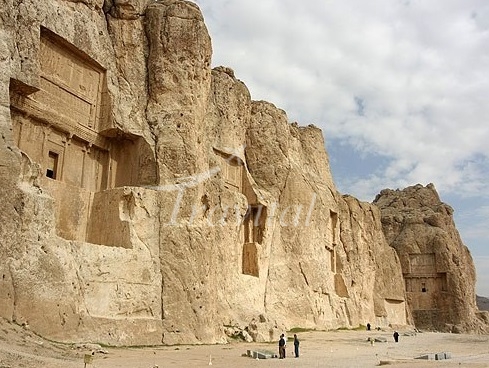Naqsh-e Rustam – Marvdasht



Overview
Naqsh-e Rustam is an ancient complex in Zangi Abad Village located in the north of Marvdasht County, Fars Province. It stands 6 kilometers from Persepolis. This ancient area contains Elam, Achaemenid, and Sassanid remains. It was of high significance from 1200 BC to 625 AD because the tombs of four Achaemenid kings, several reliefs from the important events of Sassanid period, the Cube of Zoroaster, and a ruined relief from Elam period exist in this place. In Sassanid era, Naqsh-e Rustam Complex was religiously and nationally important as well. The oldest relief in Naqsh-e Rustam belongs to Elam period that displays the relief of a god and goddess and a king and queen. But, Bahram II removed some parts of it later in Sassanid period and carved his court instead. The Cube of Zoroaster is a tower-like stone monument in the area which was most probably built in Achaemenid period and its function is already unknown. There are two inscriptions from Shapur I and Kartir on three corners of the Cube which are historically valuable. Four crypt-like tombs have been built in the heart of mountain, which belong to Darius the Great, Xerxes, Artaxerxes I, and Darius II, and all of them have the same features. Ardashir I was the first one who carved a petroglyph in this place and registered the scene of his taking the crown from Ahura Mazda. After him, Sassanid kings also carved the scenes of their coronation or description of their wars and honors on the mountain. The fact that Ardashir and Shapur, his son, carved some reliefs beside the reliefs of their fellow Achaemenids in Naqsh-e Rustam probably suggests a cultural and political strategy in imitating in the past.
See more in Marvdasht
Your Travel Journey Starts Here
Sign up and we'll send the best deals to you

